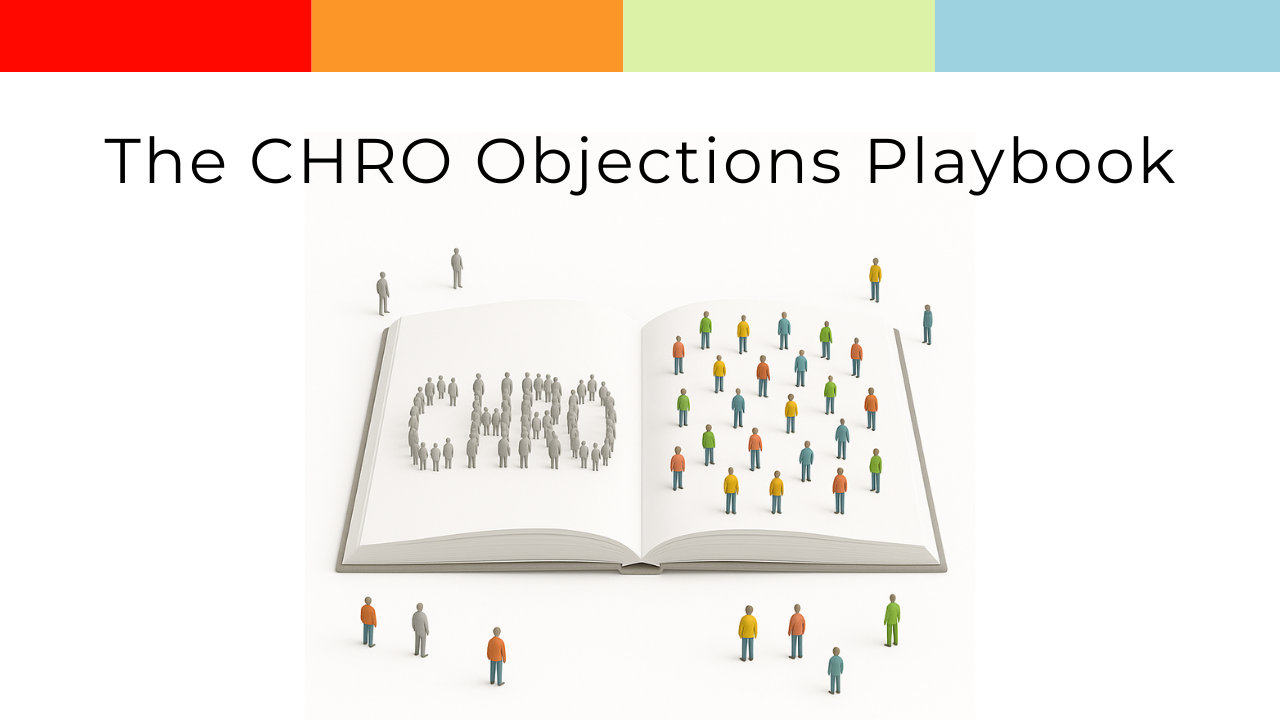What CHROs Can Use From Private Equity Due Diligence

Below is a concentrated, C-suite-ready set of lenses drawn from the PE diligence playbook. Think of these as the critical “pressure points” PE firms press on. Any executive can use these same pressure points to:
- Review their own business for blind spots and growth levers.
- Evaluate a company they’re considering acquiring.
- Assess a potential employer before accepting a C-level role.
This is the material inside your research that maps directly to those practical purposes.
1. Financial Reality Check
Purpose for C-suite: Confirm whether the business model is durable, cash generating, and clean enough to scale.
When to use: Quarterly business reviews, pre-acquisition assessments, executive job due diligence.
Key PE Questions You Should Use
- Are earnings real and repeatable, or boosted by one-time events?
- Does profit actually convert to cash, or is working capital hiding issues?
- Is customer concentration putting the business at risk?
- Are accounting practices conservative, nor...
Why Yor Smartest HR Arguments Still Don’t Land

Why your smartest HR arguments still don’t land in the AI era
HR shows up with the perfect plan. The analysis is sharp. The logic is airtight. And the business still doesn’t move.
Seth Godin is right. Persuasion is rarely about logic. Inside companies, I see this play out daily with even the strongest CHROs. They spot risks earlier, connect dots faster, and understand talent implications long before anyone else feels the impact.
That’s the curse of genius at work. You see the future before others catch on. The problem is that the people you are trying to influence are standing in a different place.
This is why your smartest arguments still don’t land. And in the AI era, the gap is widening.
Below is the question, answer, evidence breakdown to help readers move from frustration to influence.
Question 1. Why does HR bring a smart, well reasoned plan and still hit resistance?
Answer
Because the business is operating inside a different worldview. What feels urgent and obvious ...
Driving Top-Line Revenue with Talent Strategies
How OSI Systems turned executive coaching into a growth engine
When most companies think about coaching, they see cost.
OSI Systems saw leverage.
In just five years, OSI doubled revenue from $1B to $2B while scaling to 8,000 employees. Behind that growth? A deliberate bet on executive coaching - not as a remedial fix, but as a performance accelerator.
In our recent CHRO Live conversation with Glenn Grindstaff, CHRO at OSI Systems, and Maureen Tarantello of Challenger, Gray & Christmas, we unpacked:
- How executive coaching helped leaders scale as fast as the business.
- The simple shift that turned coaching from a “badge of shame” into a badge of courage.
- How tying coaching goals directly to revenue, profit, and cash flow created measurable ROI.
- Why CEOs who hesitate to invest in coaching may be missing their biggest growth lever.
If you’ve ever wondered whether one-on-one coaching can actually move topline results - this conversation will change your mind.
CHROs: If yo...
The Hidden Cost of CHRO Isolation and the Proven Way Top Leaders Are Breaking It
The Most Overlooked Risk in the C-Suite
Every company says people are its greatest asset. But what happens when the leader who manages that asset, the Chief Human Resources Officer, is quietly running on empty?
Most CHROs sit at the center of strategy and culture, yet many say the role is one of the most isolating in the entire C-suite. There’s no real safe place to test big ideas or vent about board pressure. That isolation isn’t just lonely. It’s expensive.
Recent research shows the financial cost of executive burnout and turnover can reach 213% of annual salary, accounting for recruiting, onboarding, and lost productivity. That’s millions lost when a top HR leader walks out the door.
Let’s unpack how this happens, what it costs, and the new peer-to-peer model that’s helping CHROs stay sharp, connected, and confident.
The “Busyness Trap” at the Top
Ask any senior executive how they’re doing, and the answer usually starts with “busy.”
Research shows most C-suite leaders are clo...
Why Career Pathing Isn’t Bureaucracy, It’s a Business Scalability Strategy
Keywords: career pathing framework, employee retention strategy, career progression HR, talent management CHRO, HR scalability
The Real Problem with Career Pathing Pushback
When CEOs or CFOs push back on career pathing, they usually say things like:
“People should own their own careers.”
or
“We’re not that big. How many levels do we really need?”
On the surface, those objections make sense. But underneath, there’s a bigger misunderstanding of what career pathing really does for the business.
Career pathing isn’t about hierarchy or entitlement. It’s about clarity and scalability.
When employees don’t know where they can grow, they assume there’s nowhere to go. That’s when your best people leave—and your retention strategy starts to crumble.
Why Career Pathing Is a Business Scalability Tool
Career pathing is one of the simplest, highest-leverage ways to protect capability and reduce leadership drag.
Without a clear career pathing framework, every manager makes up their own ...
How to Build an In-House Recruiting Engine That Scales (Even if Executives Want to Outsource)

The Real Problem
Every CHRO has heard this one:
“Why do we need an in-house recruiting team? Let’s just use search firms.”
On the surface, it sounds practical. External recruiters feel faster and easier. But underneath, that objection isn’t about cost - it’s about context.
CFOs are thinking: fixed headcount equals fixed cost.
CEOs want agility and speed.
Private equity sponsors want proof it moves EBITDA.
When you hear that question, what they’re really asking is:
“Can we scale without locking in overhead - and still get quality hires fast?”
The Truth
You can’t outsource scalability.
Recruiting is a core business capability, not a back-office task.
If your company plans to grow, acquire, or pivot, you need an internal recruiting engine that can flex with business priorities - not a patchwork of vendors chasing requisitions.
External search firms fill jobs reactively.
Internal recruiters build relationships and pipelines proactively.
That difference determines whether your comp...
How CHROs can turn succession planning into a true leadership accelerator with Aja Howell
In this 30-minute CHRO Chat, Cindy Lu and Aja Howell unpack how to turn succession planning into a true leadership accelerator. Aja shares the behind-the-scenes systems that move talent conversations from static binders to dynamic, development-driven conversations.
They cover:
- Building alignment around what C-suite readiness looks like
- Defining executive presence behaviorally so leaders know how to grow
- Embedding learning into the workday instead of pulling leaders out for long sessions
- How to use AI tools to accelerate calibration and competency modeling
This is a must-watch for CHROs who want to stop reacting to leadership gaps and start engineering readiness for the future.
What CHROs Can Learn from Sales: Why Objection Handling Might Be the Most Underrated HR Skill

Hi, I’m Cindy Lu, founder of CHRO Partners and creator of the CHRO Mastermind Groups for Chief HR and People Officers of companies with over 500 employees.
If you’ve ever walked out of an executive meeting thinking,
“I know this is the right move for the business, why can’t they see it?”
…you’ve already experienced what sales teams call objection handling.
In sales, objections aren’t rejection. They’re buying signals.
When a customer says, “This sounds expensive,” or “We’ve tried that before,” they’re not saying no.
They’re saying, “Show me why this matters enough to say yes.”
Smart salespeople expect those moments. They train for them.
They have playbooks full of real-world objections and responses that build trust, not tension.
But in HR?
We’re often expected to navigate the same level of executive skepticism without the training, tools, or language sales teams get.
The Missing Skill in HR
When a CFO says,
“We don’t need an in-house recruiting function, we can just use search...
How CHROs can use AI tools like Scribe and Articulate360 to cut L&D time by 80%

How to Cut L&D Content Creation Time by 80% Without Hiring More Staff, Even If You’re Starting from Scratch
When your organization grows 40% in two years, the pressure to scale training, SOPs, and onboarding materials becomes real.
That’s exactly what happened at Child Care Resource Center (CCRC) in Los Angeles, a nonprofit that went from 900 to nearly 1,400 employees in record time.
Their Chief People and Culture Officer, Lisseth Zouhbi, realized her team needed to produce learning content faster, without ballooning headcount or budget.
So, she turned to a combination of AI-powered tools — Scribe, Articulate360, and later Kindo AI — to streamline how her L&D and HR teams worked.
Below, we unpack what she did, how it works, and what results she saw so you can borrow the playbook for your own HR function.
Q1: What Problem Was CCRC Trying to Solve?
When CCRC implemented Workday, they had to create 50+ SOPs from scratch.
Without automation, that would have meant hours of s...
The Missing Link in Executive Education and Why It’s Costing Companies Millions

MBA programs teach future executives how to read a P&L, model cash flow, and pitch investors, but not how to leverage HR as a growth engine.
That blind spot has a real price tag.
When leaders don’t understand how to use strategic talent practices, three things happen:
-
Businesses lose efficiency and competitive advantage.
-
Employees lose opportunities to grow and thrive.
-
CHROs lose time re-educating peers instead of accelerating impact.
It’s not a small gap. It’s systemic.
The Blind Spot in Executive Education
Business schools focus on finance, strategy, and operations, but rarely on strategic HR or talent management.
AACSB accreditation doesn’t require it either.
You can graduate from a top business program having never learned how to align talent with strategy.
The Data Is Overwhelming
McKinsey found that companies that develop and deploy human capital well are the most profitable in their industries.
Gallup shows highly engaged workforces deliver 23% h...

